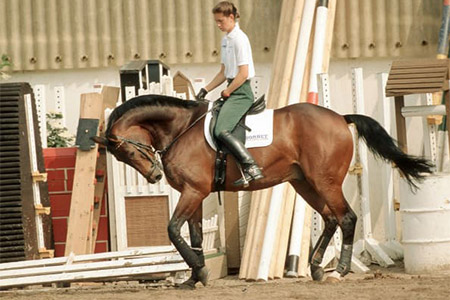
The debate about deep and round has been raging for almost 30 years, back in 1994, dressage master, Reiner Klimke made his views clear in an exclusive interview with Christian Thiess….
The debate was sparked by this photo of Nicole Uphoff riding Rembrandt. Do you see a dressage horse spooking at the showjumping equipment and the rider using a momentary extreme rounding to keep control? That was how it was explained by the rider and trainer.
Still the accusations were leveled at two students of Dr Uwe Schulten-Baumer, Isabell Werth and Nicole. At the time, Christian Thiess was travelling in Europe and regularly filing stories for THM. Luckily for us, he caught up with Reiner Klimke to get his views on the subject.
This was Christian’s opening question:
Dr Klimke, referring to the subject that causes so much controversy, riding low in an exaggerated way, like Nicole Uphoff and Isabell Werth, during training, is that a deviation from the classical art of riding?
Here’s Isabell warming up Antony at the European Championships the day before the competition started, at the beginning and end of the session. Again it should be noted that in the top pic, the horse has had a little shy, this is not a training technique, it is a correction by Isabell to get his attention back – and not end up in the VIP tent…
And Dr Klimke’s reply?
“You approach me about our top riders, Nicole Uphoff and Isabell Werth. I believe to start with, we should approach this subject in a more neutral way. We did not invent dressage riding. We only continue the tradition of our fathers and grandfathers. This is laid down in the Guidelines for Riding and Driving, in the FEI regulations, and in numerous books, for instance, Dressage Riding by Richard Wätjen.”
Antony and Isabell in the competition arena
“The guidelines of training dressage horses are clear and distinct. We should not offend against them. This does not mean uniformity of the style of riding during the course of a riding career, and this is a good thing. I have ridden differently from Harry Boldt, he has ridden differently to Josef Neckermann. We have represented German dressage riding successfully, but everybody had his own style.”
Dr Klimke and Pascal
Harry Boldt and Woycek
But all on the basic principles of the classical art of riding?
“I was just going to come to this. I think I was one of the first after World War 2 who loosened up their horses on the warming up arena. At that stage, this was not the normal practice. The usual practice was to sit on the horse, put it on the rein and start to work him. I didn’t like that, I had come from eventing, back to dressage, and I stood for the thesis you can read in my books – the Riding Session has three parts. First part is loosening up, and suppling the horse, the second is work, third is riding dry.”
“In the loosening up phase I try to set my horses long and low, meaning the neck shall stretch forward and downward, so the horse loosens his back. During this phase I do not watch so much the expression of his movements, but I try to get rid of the stable exuberance, and the superfluous drive to move, and to loosen up stiffness caused by standing in the stable. For me, that is loosening work, to ride my horse long and low during this phase.”
“What you see now is wrong because the horse’s nose comes behind the vertical. I don’t want this. After the loosening up phase, the first part of my riding session, I make a distinct break and then come to the working phase. There I drive the horse onto a still hand, so that the neck grows out of the wither and gets fixed at the wither. I do not want the horse loose where the neck is set on the wither, that’s when tilting comes up during lateral movements, but I must feel with both hands the contact to the horse’s mouth, and there I already distinguish what we have learned and done before, from what you see nowadays sometimes.”
“Now I don’t want to step on anybody’s toes, but it is my opinion that the way Harry Boldt and I have been riding at the height of our careers is correct, and that there is reason for us to aggressively stand up for that these days.”
Rembrandt and Harry Boldt on warm up day at Stockholm
“It is another question, and that is how Harry Boldt has described it, whether one accepts a little mistake in the case of a very difficult horse to avoid a bigger one. Now let’s go to Rembrandt. Rembrandt is a fantastic horse, but he is very ‘watchy’, very spooky. Nicole Uphoff therefore tries deliberately to set him a bit lower, and she has success with it.”
About to enter the arena at Stockholm
“You will not see Rembrandt too low in the test, just the opposite. There he can see everything and is a fantastic artist in competition. This combination has tried this method out, and have thus obtained this style. If one were now to try to change it, it would make the pair insecure. Therefore I think Harry Boldt is right in saying ‘we do this for this reason with this horse’ without saying that the entire way of riding must change.”
“I can’t say much about Isabell Werth because I don’t see her much during training. She is with an outstanding trainer, Dr Schulten-Baumer, who actively stands up for the riding system she is using, and that is his conviction. He has his conviction – we have ours. Both existing side by side is well possible. I have said already that everybody has the right to his own style.”
Isabell and another of her star rides at the time, Welcome
“Certainly Dr Schulten-Baumer will name enough reasons why his horses go like this. And he is successful after all. We have our horses going our style and we were successful as well. What you prefer more is the decision of the taste of the public. The goal we are trying to achieve is finally the same.”
I think the goal is that the horses go in a very good outline, they go in very good self-carriage…
“I think it is important that the upper neck muscles of the horses are strongly enough developed, so that the horse can arch his heck and move in proud self carriage. We can’t converse with the horses, that is our problem, but I can’t imagine that a horse goes contentedly if it has to go with the nose behind the vertical. Apart from that I don’t think it is aesthetically pleasing. It is much more aesthetically pleasing when the horse retains his pride which is primarily expressed through self-carriage and through that he retains his entire personality, or in other words, the horse expresses his personality and presence.”
Dr Klimke and Biotop working at home
You don’t convince me yet, but I wish to be convinced by you, and therefore I come up with contrary arguments. Yesterday I watched twelve showjumping riders warm up, and nine of them in running reins. Some of them ride their horses well in running reins, because they are good riders. Alwin Schockemöhle used to do it, and from behind, low and round. So the running reins are an auxiliary device – and other riders just pull in the heads and the horses go tensely, making an awful picture. Some do it well, some do it badly. The good ones make their horses bascule exactly as they need over a fence, they develop the back muscles…
“Yes, but the showjumpers have a different goal, they do not want to improve the gaits, but they want to put their horse on the right point for the most suitable take-off .”
Reiner’s daughter shows us she follows her father’s principles today
But the gaits can be improved by a swinging back…
“Agreed, that’s why we loosen up the horses. But by very strongly forcing the hind legs and screwing together the neck at the same time, I see the danger that the back is over-burdened and destroyed. That worries me. The method that works for skilled artists holds danger for the general public who are trying the same thing – it is easy for them to take the wrong path and destroy the horse in a short time.”
“The imitators don’t loosen up the horses’ backs but destroy them, because they don’t precisely sit on that area which is arched through increasing engagement of the hind legs and through taking back the neck. The rider who cannot sit supplely and swing loosely in the middle position will sour the horse’s back.”
But the two riders – Isabell Werth and Nicole Uphoff – don’t do this…
“You are perfectly right, but do you know what the others are doing who are trying this and can’t ride that well? That is the reason why I am worried. I’m worried that riders with not so much experience copy this wrongly. We had this problem with Alwin Schockemöhle. He could do it because he was a great artist, but then there were many imitators who thought, for showjumping, I first need running reins so that I put the head down. I have seen Alwin Schockemöhle do this, and I want it too. This risk must not be furthered now in the area of dressage. The rider who does not have the expertise to weigh the advantages and disadvantages of the setting low, runs the risk of taking the wrong path and enslaving the horse.
But how many riding instructors are in the position to understand this in this way?
“Here I have great worries. I stress again: there is no reason to put the classical art of riding on the testing stand and to demand that we must ride differently now. There have been artists at all times who have been experimenting and they had success with it. But that does not mean that the classical principles of training horses – as described in the guidelines of the Official Handbook – are under question.”

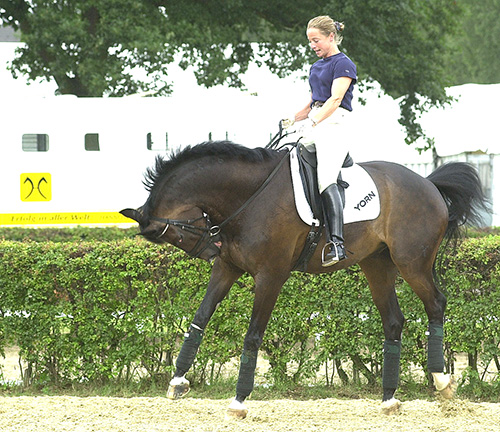
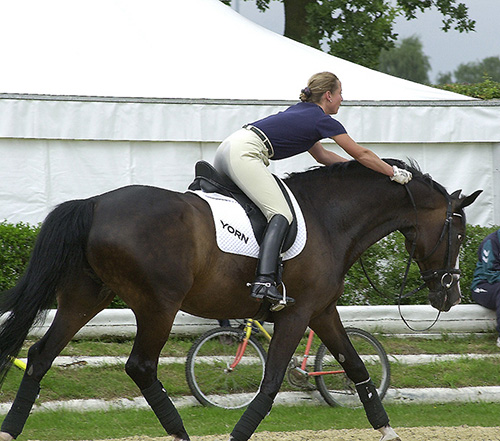
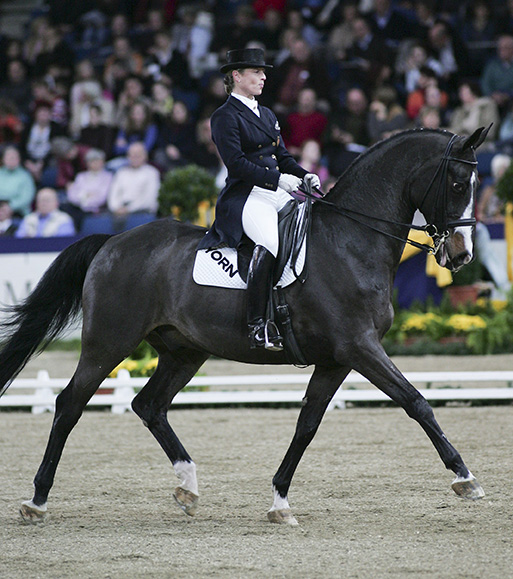
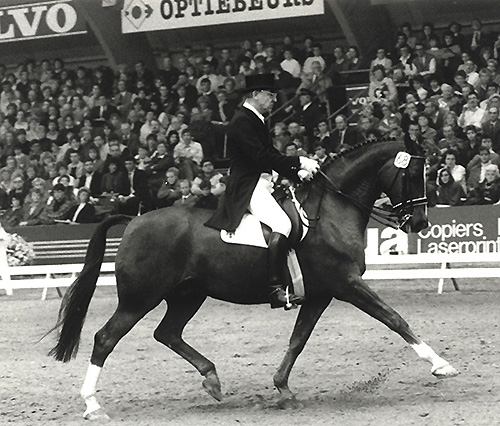
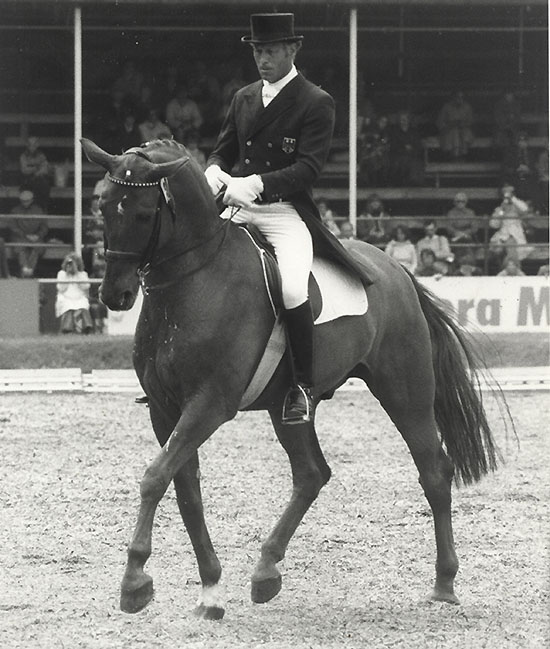
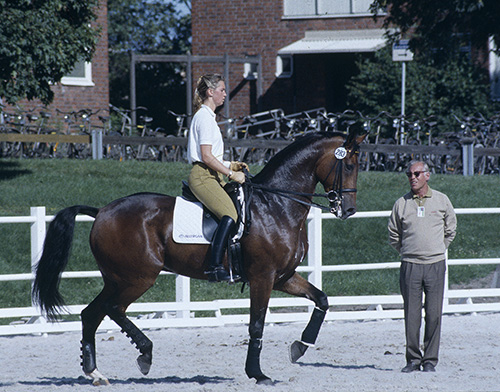
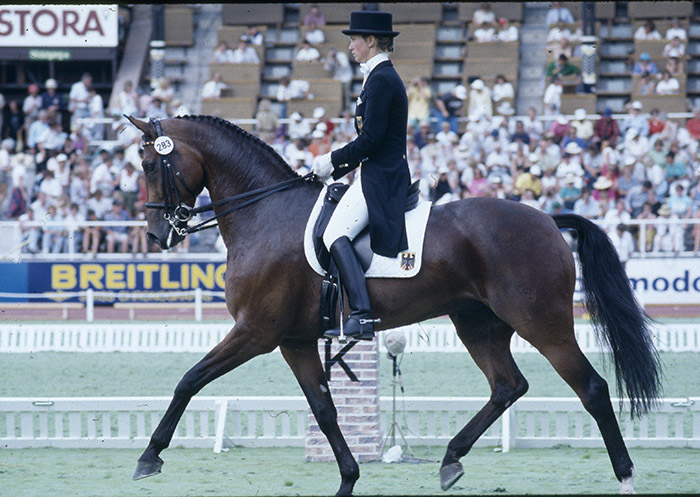
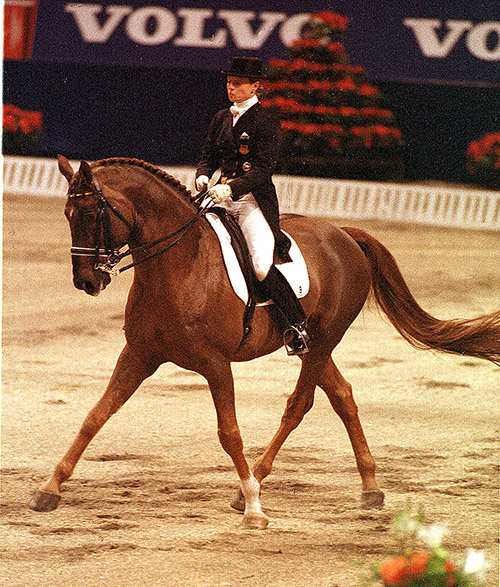
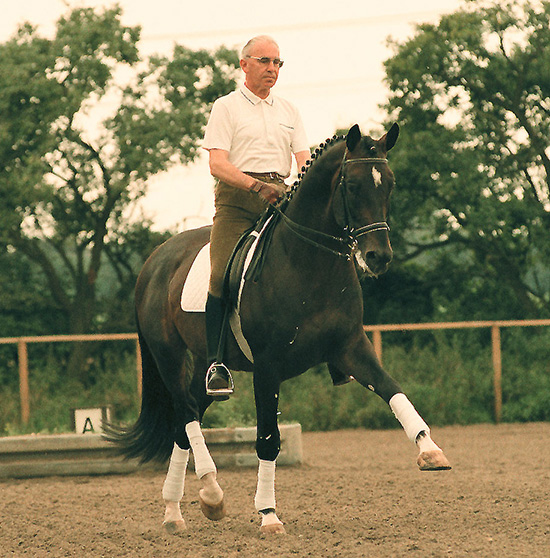
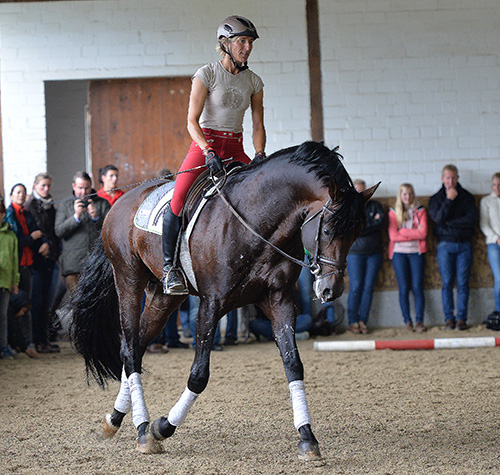
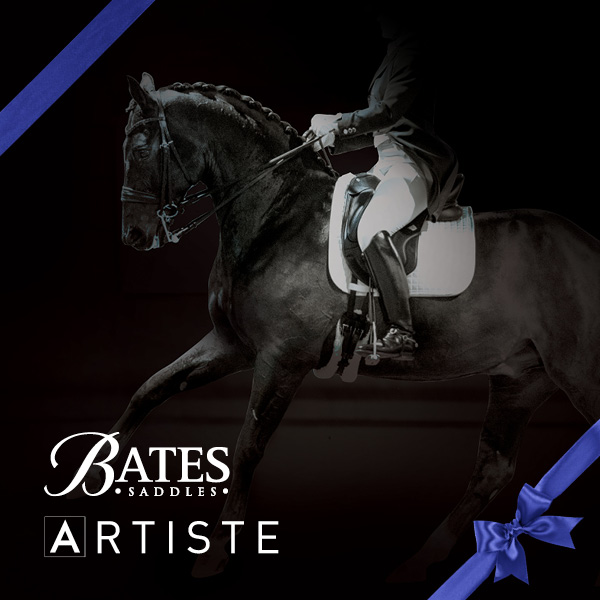
Old school and excellent. Herr Klimke has described clearly WHY a rider should or should not ask movements of the horse. Each horse is different but classical training can be adjusted for the horse.
Thank you for publishing this excellent interview with Klimke. I wish he was still with us. I hope the art of dressage finds its way back from “rollkur”. Over bending the horse at the poll destroys the free forward movement. It takes more experience and skill and a supple, swinging seat to sit a horse moving freely forward. Sadly the life history and untimely deaths of certain extraordinary horses trained with rollkurr, like the incredible mare Blue Matinee, should serve as a warning to us all to turn away from such techniques. Matinee performed because she loved the dance, and she never knew there was any other way. How marvelous it would have been to have seen how much more amazing this already amazing mare might have been had she been trained by someone like Klimke. Perhaps her career, and ultimately her life, might not have been cut short by so many injuries.
Dr Klmke’s words are always magic to my ears ,and luckily Ingrid is carrying on with his good standards of riding.